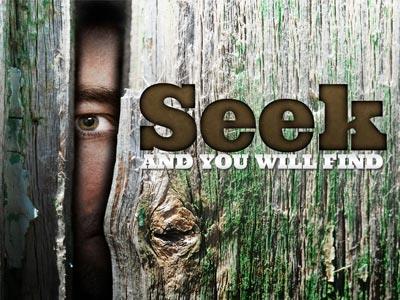-
Parable Of The Sower
Contributed by Christopher Arch on Jan 20, 2024 (message contributor)
Summary: A series on the parables of Christ.
Title: “The Parable of the Sower” Script: Mt. 13:1-23
Type: Expos./Series Where: GNBC 1-21-24
Intro: People love stories. From the time you were a young child, your parents read stories to you. Stories are passed down from generation to generation. My grandfather was one of the greatest story-tellers I have ever known. I was doing a Google search on top 10 story tellers of all time: Richard Branson, Charles Dickens, Wm Shakespeare, Steven King, JK Rowling, Hans C. Andersen, Walt Disney, Steve Jobs, O. Winfrey, JRR Tolkien. I would add another name, Jesus Christ. Everyone likes to hear a great story. Certainly Christ did not disappoint. Stories had essential spiritual applications all need to know and understand.
Prop: As begin our series on the KOG parables we’ll notice 3 important elements from Mt. 13:1-23.
BG: 1. Parables can be tricky to interpret. Some people want to make them allegories, wherein every main point and detail is important. A parable, however, is a story with two levels of meaning, where certain details in the story represent something else. Think of like a sermon w/1-3 main points. Context and common sense. Relevant and irrelevant details.
2. An old definition of parable is an earthly story with a heavenly meaning. Parables tell a story using something we see every day to help us understand a spiritual truth that we can’t see with our eyes.
3. Mt. 13 Jesus gives 8 parables of the KOG. 1st and longest is Parable of the Sower. Is this parable of sower or of soils?
Prop: As begin our series on the KOG parables we’ll notice 3 important elements from Mt. 13:1-23.
I. The Parable vv. 1-9
A. Jesus Begins to Teach the Parable.
1. We see the setting and the rationale for the parable.
a. The scene of this parabolic sermon of Jesus’ was the Sea of Galilee v.2. Because of the great multitudes following our Savior, the lake and the shore became a great amphitheater, with the people on the shoreline and Christ a bit off shore in a boat. This unique pulpit afforded Jesus both amplification and opportunity to fully see His audience. While they stood, He sat in the boat in the role of a religious teacher.
b. Matthew records two rationales for parables, one for outsiders and one for disciples. Jesus explains the parable to the disciples because revelation is given to some and not to others. Jesus’ explanation of the reason for parables cannot be softened, because part of His answer to the disciples is that one of the functions of parables is to conceal the truth, or at least present it in a veiled way. In biblical usage the “mysteries” to which Jesus refers are plans or decrees often presented in veiled language and made known to the elect.
2. Christ’s Parables Fulfilled Prophecy.
a. Matthew is showing that what is taking place on the one hand is the fulfillment of prophecy and the decreed will of God, and on the other hand a gross rebellion of unbelief and spiritual ignorance by the crowds. The responsibility for their unbelief is their own entirely, because man always does as he chooses. The fact that God foreknew they would do this does not in any way diminish their culpability.
b. But He came with a mission to call people into the kingdom. Jesus’ use of parables was a way of teaching the truth or preaching about the kingdom without casting His pearls before swine. The parables will harden those who are already hardened against Him, and enlightened His disciples about the kingdom. Parables challenge the hearers in matters of the faith. The parables do not contain esoteric truths that only the initiated or enlightened could understand--they seem pretty clear. No, the parables present the claims of the present form of the kingdom in such a way that only those who trust Jesus will understand the new direction in the plan of God.
B. What are the Important Elements of this Parable?
1. The Parable Speaks of Sowing Seed in 4 Different Circumstances.
a. What were those circumstances? Seed scattered on a path. Seed scattered on rocky ground. Seed scattered among thorns. Seed scattered on good soil. Now, each circumstance has a corresponding secondary element. 1. On the path we see there are troublesome birds. 2. The rocky ground is exposed to the scorching sun. 3. The thorns grow up quickly and choke out the seed. 4. The seed on the good soil bears varying amounts of fruit.
b. In this understanding Jesus represents the sower and His message of the KOG is represented by the seed. The receptivity of the seed is therefore the receptivity individuals have for the message of the KOG, the Gospel.
2. We need to make sure today that we are hearing as well as we should.

 Sermon Central
Sermon Central



